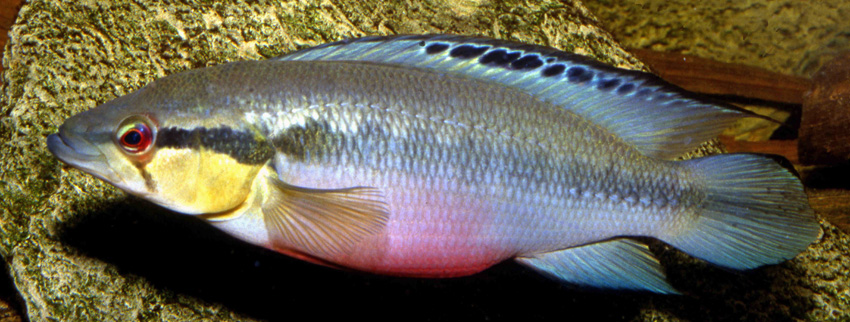new combination:
Saxatilia lepidota (Heckel, 1840)
comb.nov. from Crenicichla
published in:
Varella, H.R., S.O. Kullander, N.A. Menezes, C. Oliveira & H. Lopez-Fernandez (2023):
Revision of the generic classification of pike cichlids using an integrative phylogenetic approach (Cichlidae: tribe Geophagini: subtribe Crenicichlina).
Zoological Journal of the Linnean Society, early view, 43 p., doi: 10.1093/zoolinnean/zlad021
abstract (from publication):
Pike cichlids form the largest clade of Neotropical cichlids, with over 100 species presently classified in two genera: Crenicichla (93 species widespread in rivers of South America east of the Andes) and Teleocichla (nine rheophilic Amazonian species). Here, we combined a new dataset of 216 morphological characters with molecular data compiled from published sources, comprising 74 terminal taxa of pike cichlids (68 out of 102 valid species, plus four putative new species), and performed phylogenetic analyses using maximum likelihood, Bayesian inference, and parsimony.
Based on a synthesis of our results and previous phylogenies, we propose a new classification in which the clade including all pike cichlids is elevated to the rank of subtribe (Crenicichlina) and the genus Crenicichla is redefined, including three subgenera: Crenicichla (monotypic with the type species), Batrachops (resurected as subgenus), and Lacustria (new subgenus). Teleocichla is maintained as a valid genus and four new genera are proposed: Wallaciia, Saxatilia, Hemeraia, and Lugubria. Our results on character mapping support the hypothesis that resource partitioning in environments with fast-flowing water and rocky beds might have played a role in the origin or maintenance of the great diversity of pike cichlids, resulting in parallel evolution of similar ecomorphs.

